This post explains how to change the default save location for new content, including documents, music, videos, and apps, on Windows 11.
All Windows content is created and saved on the Local Disk C: drive, which has been the default location since the inception of modern Windows operating systems.
You can now select the location for installing or saving new content in Windows 11. This feature is particularly beneficial if your Local Disk C (This PC) has limited storage space.
Additionally, you can choose where new applications will be installed.
Change Default Apps Installation Path in Windows 11
Use the steps below to change the default location where apps, documents, videos, and music are installed and saved.
Windows 11 has a centralized location for the majority of its settings. Everything can be done, from system configurations to creating new users and updating Windows from its System Settings pane.
To get to System Settings, you can use the Windows key + I shortcut or click on Start ==> Settings, as shown in the image below:
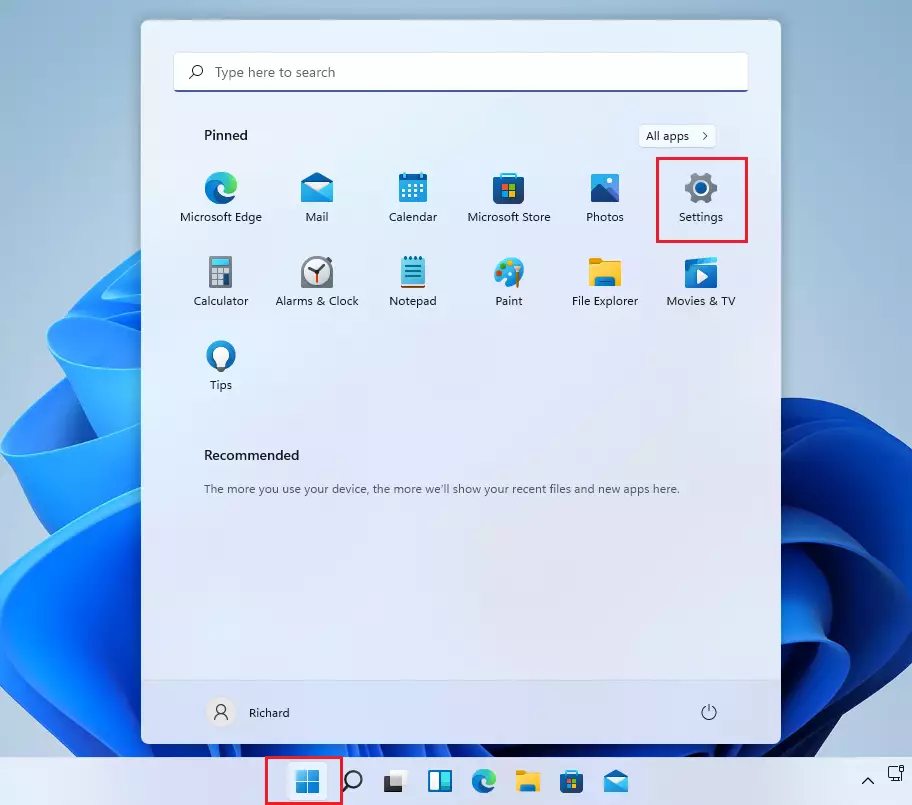
Alternatively, you can use the search box on the taskbar and search for Settings. Then select to open it.
The Windows Settings pane should look similar to the image below. In Windows Settings, click System, and select Storage on the right pane of your screen, as shown in the image below.
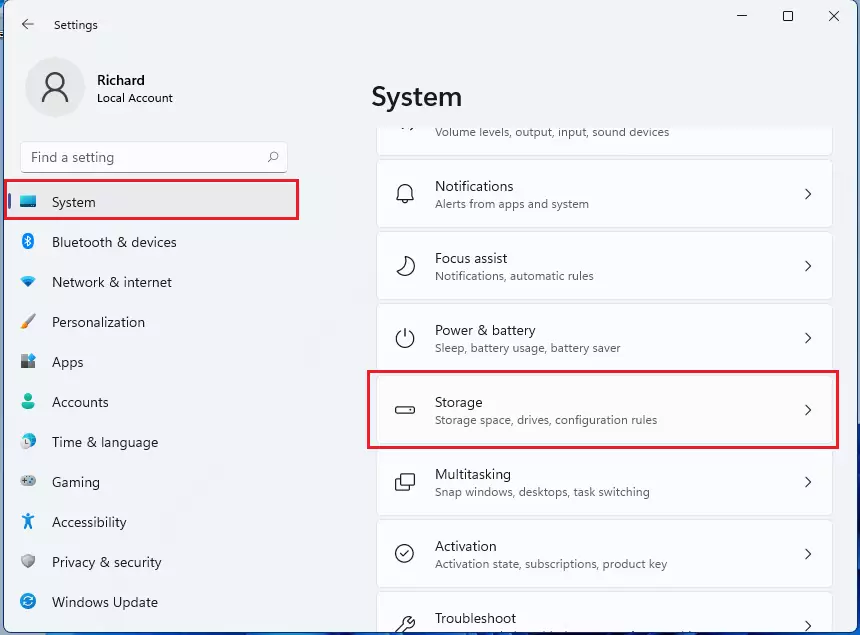
On the Storage settings pane, click Advanced storage settings, as highlighted in the image below.
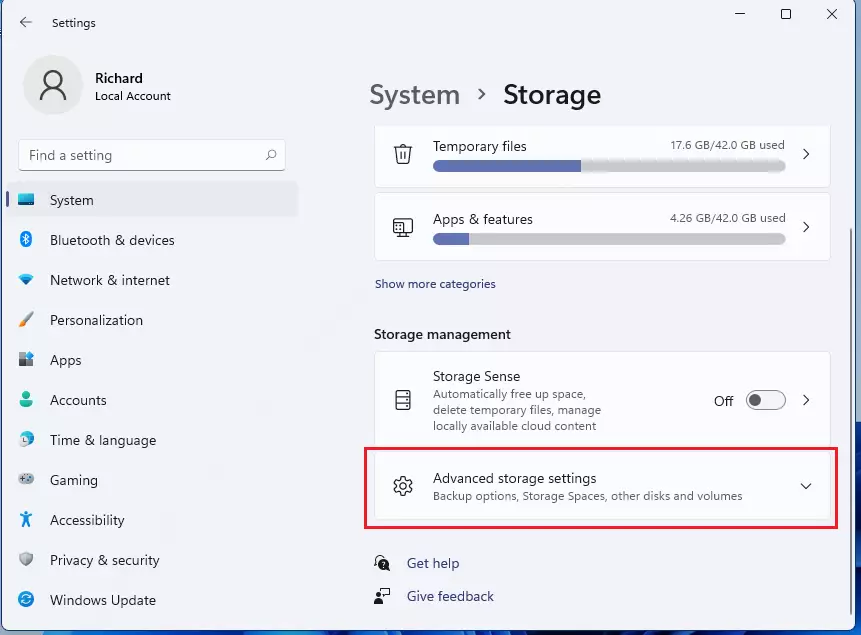
Select the location for saving new content in the Advanced Storage settings pane as highlighted below.
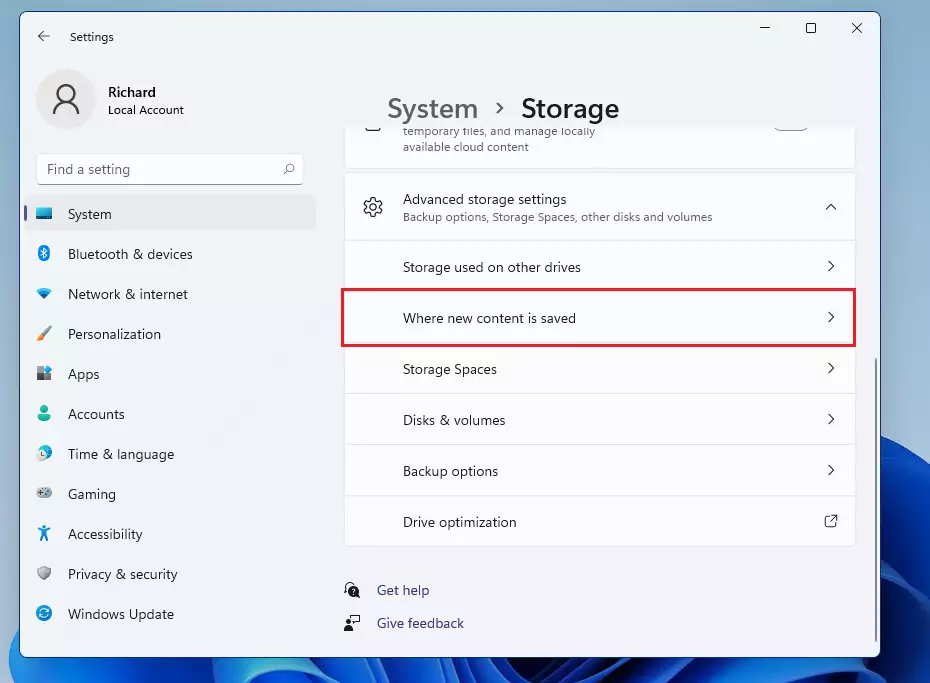
The Local Disk (C:) is the default location for documents, music, pictures, videos, and maps.
If your local disk is out of storage space and you have another larger disk installed, you can change the default disk for all new content.
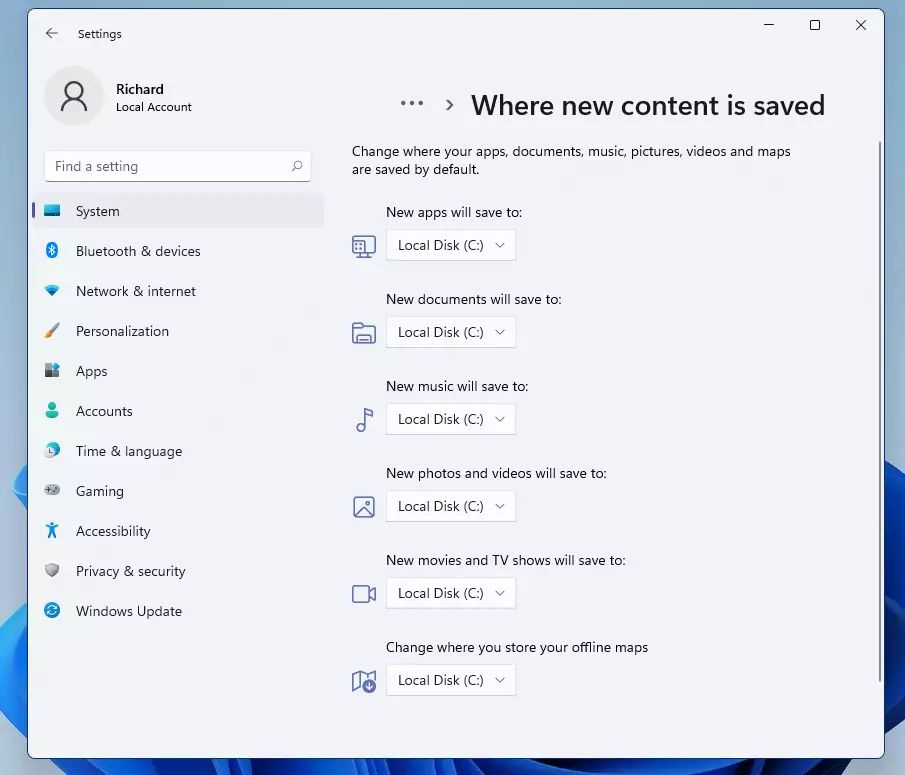
Choose a new disk drive as the default new path for new content. Remember to click Apply to make it the default location for new content.
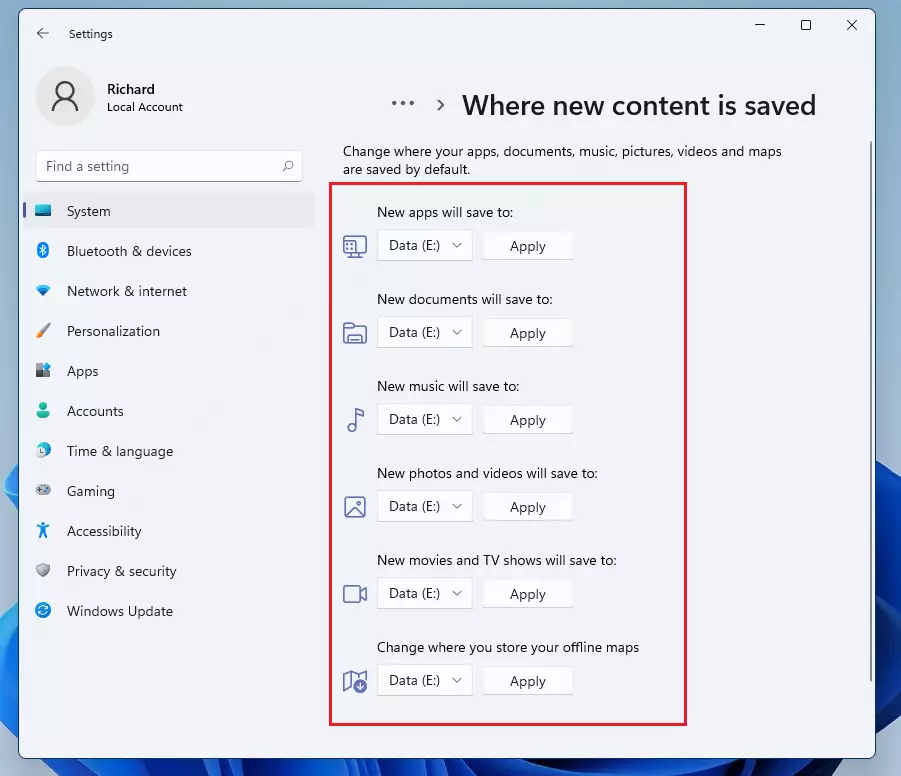
Remember these when selecting where apps, documents, music, pictures, and videos are saved by default.
- You can only select a single location at a time for each item.
- You cannot install apps or programs on a network location
- Only new apps will be installed after the change. Existing programs do not get moved to the new location.
- You can install apps on external or thumb drives. These portable drives must always be attached to the computer for your programs installed on them to function.
- When the drives are removed, your programs will not function
That should do it!
Conclusion:
Changing the default save location for new content in Windows 11 can significantly enhance your storage management and optimize your workflow. Here are the key takeaways:
- Flexibility: You can easily select a new save location for your documents, music, videos, and apps, especially useful if your Local Disk C: is running low on space.
- Simple Process: The process is straightforward, involving just a few clicks in the System Settings.
- Single Location: Remember that you can only set one location at a time for each type of item (docs, apps, etc.).
- New Apps Only: The change will only affect newly installed apps; existing applications will remain in their original locations.
- External Drives: You can choose external drives for installation, but they must always be connected to access the programs installed on them.
By following these guidelines, you can make the most out of your available storage in Windows 11.

Leave a Reply